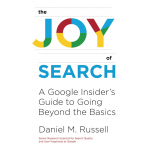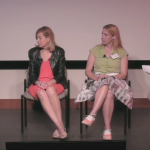Symbol recognition…
 |
| P/C Dan. |
… usually happens unconsciously, or at least very rapidly.
Our world is full of symbols that we see, yet might not really understand. Here are a few such symbols… what are they? What do they mean? (And most importantly, HOW DID YOU LEARN what they are?)
Let’s answer this week’s Challenges.
1. What’s this symbol? What does it mean? Where might you see this?
As a few people pointed out, these Challenges aren’t that difficult. This one is especially easy: you just copy the symbol and then paste into your search engine. When I paste this character into Google I see this:
With a nice definition of what the character means. If you scroll down the page a bit, you’ll then see:
And clicking on the Wikipedia link shows you this:
 |
| Fleuron Wikipedia page |
Notice that the highlighted text is the same text that’s extracted into the “People also ask” abstract. VERY handy.
Answer: This is the “Rotated floral heart bullet emoji” aka the “floral heart” or “hedera” or “aldus leaf.”
(I note in passing that Bing doesn’t have anything for this query.)
2. What’s this symbol? What does it mean? Where might you see this?
Again, this isn’t tough… just right click (or Control+click on a Mac) to search for Image with Google. (Or, if you’re old school, you can save the image to your drive and then do a regular reverse image search.)
But you’ll quickly learn that this is the OBA icon. Okay, what’s that?
The obvious search teaches us that this the “Online Behavioral Advertising” icon indicating that the website follows the AdChoices design guidelines.
AdChoices is a self-regulatory program for online interest-based advertising in the United States, Canada, and Europe.
The idea is that clicking the icon “…provides information from the company that helped bring you the ad and [gives you] a choice to opt out from such interest-based ads using free-to-the-consumer Digital Advertising Alliance (DAA) tools.” (Link to YourAdChoices.com and the Wikipedia article on AdChoices.)
That might be, but until recently, I never really noticed it–I certainly didn’t think of it as a clickable target on the page. Did you? (Just for fun, I finally clicked on one of these icons… it was supremely unhelpful in helping me manage my ads preferences.)
Answer: This is the OBA icon that, in principle, will help you manage the ads that are shown to you. In practice, it’s not especially helpful.
3. What are these symbols? What do they mean? Where might you see these? What’s the difference between the two symbols?
Search-by-image is our friend again, but it takes a little more digging to realize that these Power On/Off icons represent two VERY different ways of turning a gadget on-and-off. From the image search I found the Wikipedia article about the different Power Symbols that are in use.
4. What’s this symbol? What does it mean? Where might you see this?
~
5. What’s this symbol? What does it mean? Where might you see this?
A fast search-by-image reveals that this is the “hot surface” icon. (ISO standard symbol 4000-0535). Oddly, I did not know this, even though I saw this icon on my instant pot cooker at home. Makes sense, but only if you know how to read hieroglyphs.
Seeing the standardized icon again (with the power icons from above) made me want to look a bit more deeply into the ISO standard symbol set. I discovered that you can browse the ISO symbol set easily, finding some old friends, icons and gylphs that you easily recognize, and others that you can’t.
 |
| From the ISO symbol browser: https://www.iso.org/obp/ui#search |
Answer: For our symbol, it’s the “hot surface” icon. Don’t touch!









